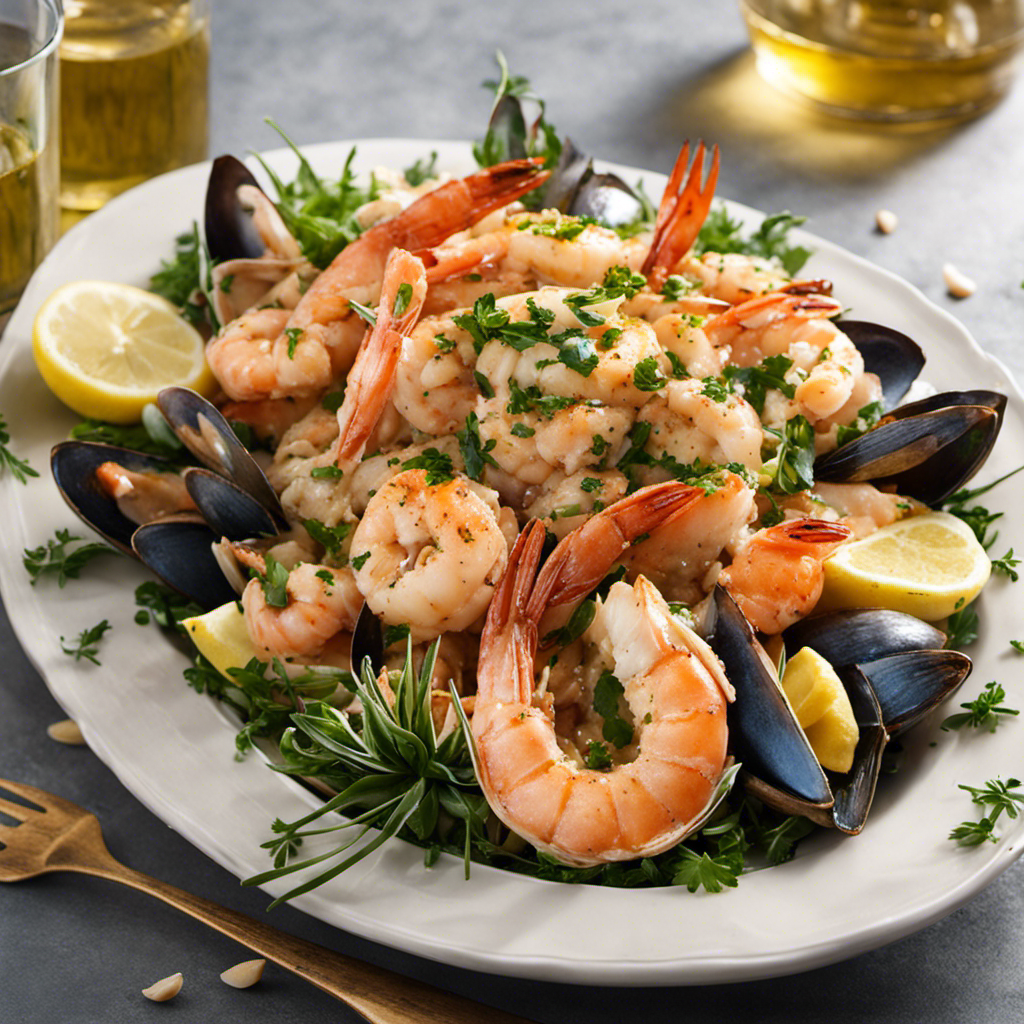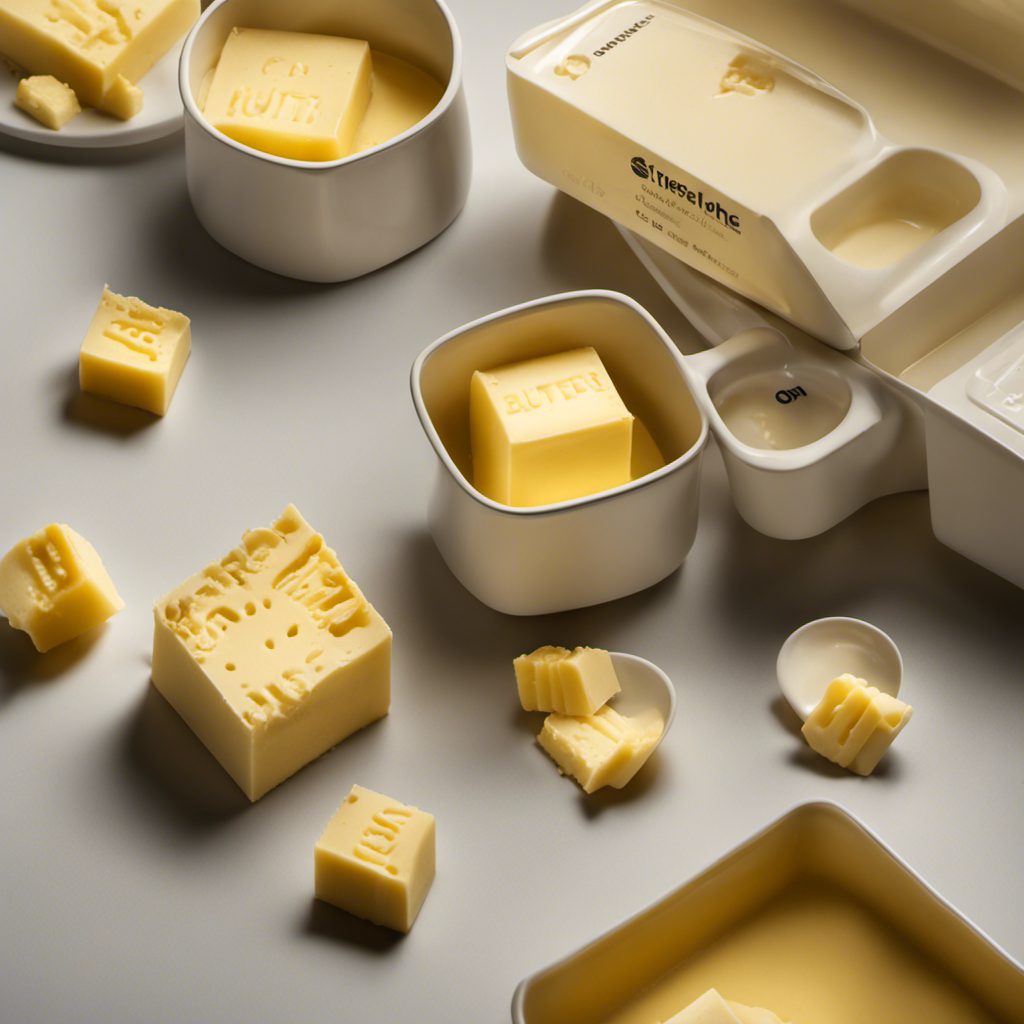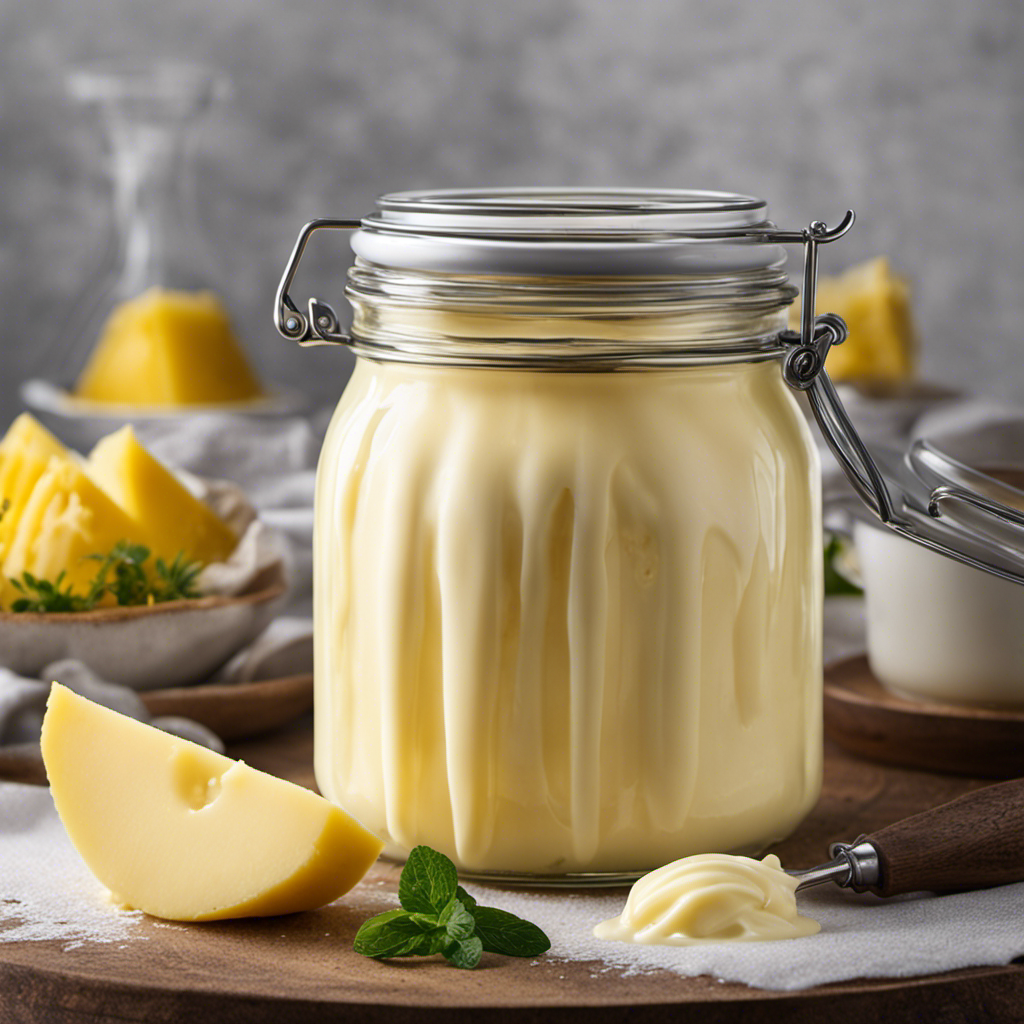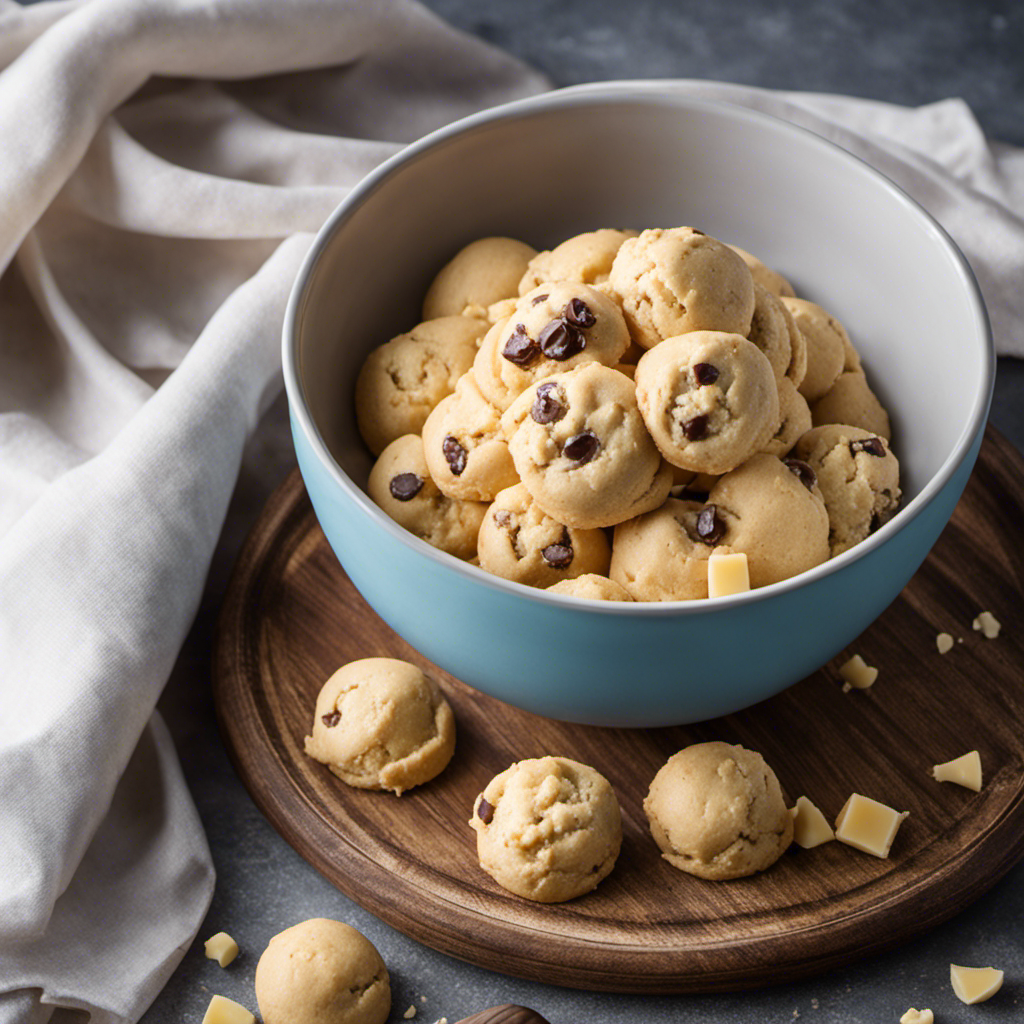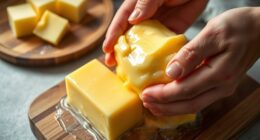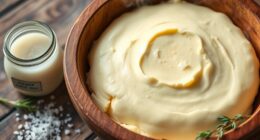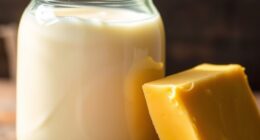I have always been curious about the weight of 8 tablespoons of butter. It is a small detail that can have a significant impact on cooking and baking. Therefore, I decided to conduct some research to finally get the answer.
In this article, I’ll explain the process of converting tablespoons to weight, reveal the exact weight of 8 tablespoons of butter, and provide helpful tips for accurately measuring butter in your recipes.
Get ready to become a butter measurement pro!
Key Takeaways
- Butter is measured in tablespoons or cups.
- To convert tablespoons of butter to weight, multiply the volume by the density of butter.
- 8 tablespoons of butter would weigh approximately 72.88 grams or 2.29 ounces.
- Using a kitchen scale is the most accurate method for measuring butter.
Understanding Butter Measurements
Butter measurements can be confusing, especially when trying to understand how much 8 tablespoons of butter weigh. When it comes to cooking, it’s important to understand the different measurements for butter and how they can be converted.
In most recipes, butter is measured in tablespoons or cups. To convert tablespoons to cups, you can use the following butter measurement equivalents: 1 tablespoon is equal to 1/8 cup, 2 tablespoons are equal to 1/4 cup, 4 tablespoons are equal to 1/2 cup, and 8 tablespoons are equal to 1 cup.
These conversions are essential to ensure accurate measurements when cooking with butter. By understanding butter measurement equivalents, you can confidently follow recipes and create delicious dishes.
Converting Tablespoons to Weight
To convert tablespoons to weight, you’ll need to know the density of the substance you’re measuring. When it comes to converting tablespoons to grams or ounces, the density of the specific ingredient is crucial.
For example, to convert tablespoons of butter to weight, you need to know its density. The density of butter is around 0.911 grams per milliliter or 0.032 ounces per milliliter.
So, for 8 tablespoons of butter, you can multiply the volume (8 tablespoons) by the density (0.911 grams/ml or 0.032 ounces/ml) to get the weight in grams or ounces. In this case, 8 tablespoons of butter would weigh approximately 72.88 grams or 2.29 ounces.
The Weight of 8 Tablespoons of Butter
If you want to know the weight of 8 tablespoons of butter, you’ll need to multiply the volume by the density. Converting butter measurements can be helpful when following recipes that call for specific amounts of butter in tablespoons.
To find the weight of 8 tablespoons of butter, you first need to know the density of butter, which is approximately 0.911 grams per milliliter. Since 1 tablespoon is equivalent to about 14.2 milliliters, multiplying 8 tablespoons by the density of butter gives us a weight of approximately 91.1 grams. This calculation allows you to accurately measure the weight of butter required for your recipe.
Now that we have determined the weight of 8 tablespoons of butter, let’s move on to measuring butter for recipes.
Measuring Butter for Recipes
When measuring butter for recipes, it’s important to accurately calculate the weight based on the density and volume. There are various butter measurement techniques that can help ensure precise measurements.
One popular method is using a kitchen scale to weigh the butter directly. This allows you to measure the exact weight required for your recipe, whether it’s in grams or ounces.
Another common technique is using the markings on the butter wrapper. These markings indicate tablespoon measurements, making it easy to measure the desired amount. However, it’s important to note that the density of butter can vary, so using a scale is the most accurate method.
Overall, the best kitchen tool for measuring butter is a reliable kitchen scale. It ensures precise measurements and helps you achieve the perfect results in your recipes.
Butter Weight Conversion Table
Using a conversion table can help you accurately measure the weight of butter for your recipes. It’s important to have the right amount of butter to achieve the perfect texture and flavor in your dishes. Here are five benefits of using a butter weight calculator and converting butter measurements for cooking:
-
Accuracy: A conversion table ensures you use the exact amount of butter needed for your recipe.
-
Consistency: By converting measurements, you can maintain consistency in your cooking, resulting in reliable and delicious results.
-
Precision: The butter weight calculator allows you to be precise in your measurements, preventing under or overuse of this ingredient.
-
Convenience: Converting butter measurements is quick and easy, making your cooking process more efficient.
-
Versatility: With a conversion table, you can adapt recipes that use different types of butter measurements, such as sticks, cups, or grams.
Tips for Accurate Butter Measurement
To ensure accurate measurements, it’s best to soften the butter before measuring it for your recipes. Softening the butter helps in achieving precise measurements and ensures that the butter is evenly distributed throughout the recipe.
Accurate measuring techniques are essential when it comes to baking, as slight variations in ingredient quantities can greatly affect the final outcome. When converting butter measurements, it’s important to keep in mind that 1 tablespoon of butter weighs approximately 14 grams or 0.5 ounces. So, if a recipe calls for 8 tablespoons of butter, you would need approximately 112 grams or 4 ounces.
Remember to use a scale or measuring spoons to get the exact amount needed. Following these tips will help you achieve consistency and accuracy in your recipes.
Converting Butter Measurements for Baking
When it comes to baking, accurate measurements are key. In this discussion, we will explore the importance of converting butter measurements from grams to ounces. We will also provide a handy butter conversion chart for reference.
Additionally, we will share some baking accuracy tips to ensure your recipes turn out perfectly every time.
Grams or Ounces
Grams or ounces: which unit of measurement is commonly used to weigh 8 tablespoons of butter? Well, when it comes to measuring butter accurately, grams are the preferred unit of measurement. Here’s why:
- Grams provide a more precise measurement compared to ounces.
- Conversion from grams to cups is easier and more accurate.
- Many recipes use metric measurements, which means grams are more commonly used.
- Professional bakers and pastry chefs often rely on grams for consistent results.
- Using grams allows for easier scaling of recipes.
So, if you want to measure 8 tablespoons of butter accurately, it’s best to use grams.
Now, let’s move on to the next section and explore a butter conversion chart to help you with your baking needs.
Butter Conversion Chart
The butter conversion chart provides a helpful reference for accurately measuring different amounts of butter. It includes butter measurement equivalents for various quantities, making it easier to follow recipes and achieve consistent results.
For example, if a recipe calls for 1 cup of butter, you can consult the chart to find that it is equal to 16 tablespoons or 227 grams. This allows you to measure the correct amount of butter, even if you don’t have a measuring cup on hand.
Additionally, the chart provides butter substitution options in case you run out of butter or prefer a healthier alternative. It suggests using margarine, coconut oil, or vegetable shortening as substitutes, with corresponding measurements to ensure the right amount is used in the recipe.
Baking Accuracy Tips
To ensure your baked goods turn out perfectly, remember to preheat the oven to the recommended temperature. Achieving precision in baking is crucial for consistent and delicious results.
Here are some tips to help you bake with accuracy:
- Use a kitchen scale: Weighing ingredients, including butter, ensures accuracy and consistency in your recipes.
- Follow the recipe: Stick to the measurements provided in the recipe to maintain the intended texture and flavor of your baked goods.
- Be mindful of alternative butter measurements: Some recipes may call for butter in different forms, such as melted or softened. Make sure to adjust your measurements accordingly.
- Measure ingredients properly: Use proper measuring cups and spoons, leveling off ingredients like flour to avoid excess or insufficient amounts.
- Maintain consistent oven temperature: Invest in an oven thermometer to ensure your oven is reaching and maintaining the correct temperature throughout the baking process.
Common Mistakes in Measuring Butter
When it comes to measuring butter, there are alternative ways to ensure accuracy. Precision is important in baking, as even a small difference in butter measurement can affect the final outcome of your recipe.
Understanding conversion ratios is crucial in order to successfully convert butter measurements and achieve the desired results in your baked goods.
Alternative Butter Measurement
If you want to measure butter differently, you can try using alternative measurements. Here are some options you can consider:
-
Grams: Instead of using tablespoons, you can weigh the butter in grams using a kitchen scale. 1 tablespoon of butter is approximately 14 grams.
-
Cups: If you prefer using cups, 8 tablespoons of butter is equal to 1/2 cup.
-
Ounces: Another option is to measure the butter in ounces. 8 tablespoons of butter is equivalent to 4 ounces.
-
Sticks: In many recipes, butter is measured in sticks. 8 tablespoons of butter is equal to 1 stick.
-
Alternative Butter Substitutes: If you’re looking for alternatives to butter, you can try using margarine, coconut oil, or olive oil as substitutes. Just make sure to adjust the measurements accordingly.
Using these alternative measurements and substitutes, you can easily adapt your recipes to suit your preferences or dietary needs.
Importance of Precision
Now that we’ve explored alternative ways to measure butter, let’s talk about the importance of measuring ingredients accurately in baking. Precision is key when it comes to baking because even the slightest variation in measurements can have a significant impact on the final results.
When we don’t measure ingredients accurately, it can throw off the balance of the recipe. For example, using too much butter can result in a greasy and heavy texture, while using too little can lead to dry and crumbly baked goods. The same goes for other ingredients like flour, sugar, and leavening agents.
Accurate measurements ensure that we achieve the right balance of flavors, textures, and rise in our baked goods. So, it’s crucial to use measuring tools like measuring cups and spoons, and follow the recipe instructions carefully. By doing so, we can avoid disappointment and enjoy perfectly baked treats every time.
Understanding Conversion Ratios
Understanding conversion ratios is essential in baking because it allows us to adjust recipes to yield different quantities of baked goods. When it comes to baking with butter, it’s important to know the conversion ratios to ensure accurate measurements and consistent results.
Here are some helpful tips to understand butter conversions:
-
1 stick of butter is equal to 8 tablespoons or 1/2 cup.
-
If a recipe calls for melted butter, measure it after melting.
-
To substitute butter with oil, use 3/4 cup of oil for every 1 cup of butter.
-
To convert butter from grams to tablespoons, divide the grams by 14.18.
-
When using salted butter instead of unsalted, reduce or omit additional salt in the recipe.
Frequently Asked Questions
How Many Tablespoons Are There in a Stick of Butter?
There are 8 tablespoons in a stick of butter. It is important to measure butter accurately for baking recipes. Butter can be substituted with other fats like margarine or oil, but the results may vary.
Can I Use Margarine Instead of Butter in a Recipe?
Sure, margarine can be used as a substitute for butter in baking. It has a similar consistency and flavor. However, keep in mind that margarine may affect the texture and taste of the final product.
How Does the Weight of Melted Butter Compare to Solid Butter?
When comparing the weight of melted butter to solid butter, it’s important to consider the density. Melted butter is denser than solid butter, so if you’re measuring butter by weight, 8 tablespoons may weigh more when melted.
What Is the Difference Between Salted and Unsalted Butter?
When it comes to salted butter vs unsalted butter, the difference is all about taste and versatility. Salted butter adds a savory kick to dishes, while unsalted butter allows for more control in seasoning. It’s all about personal preference!
Are There Any Alternatives to Using Butter in Baking?
There are alternatives to using butter in baking. One option is to use oil, which can add moisture and richness to baked goods. It also has the benefit of being a dairy-free option for those with allergies or dietary restrictions.
Conclusion
In conclusion, understanding the weight of butter is crucial for accurate measurements in cooking and baking.
Converting tablespoons to weight can help ensure that your recipes turn out just right.
For example, let’s say you’re making a batch of chocolate chip cookies and the recipe calls for 8 tablespoons of butter.
By knowing that 1 tablespoon of butter weighs approximately 14 grams, you can accurately measure the right amount of butter needed for delicious, perfectly baked cookies.
So next time you’re in the kitchen, remember to measure your butter properly for the best results.


